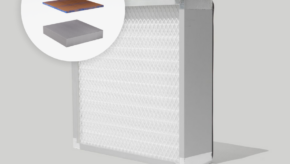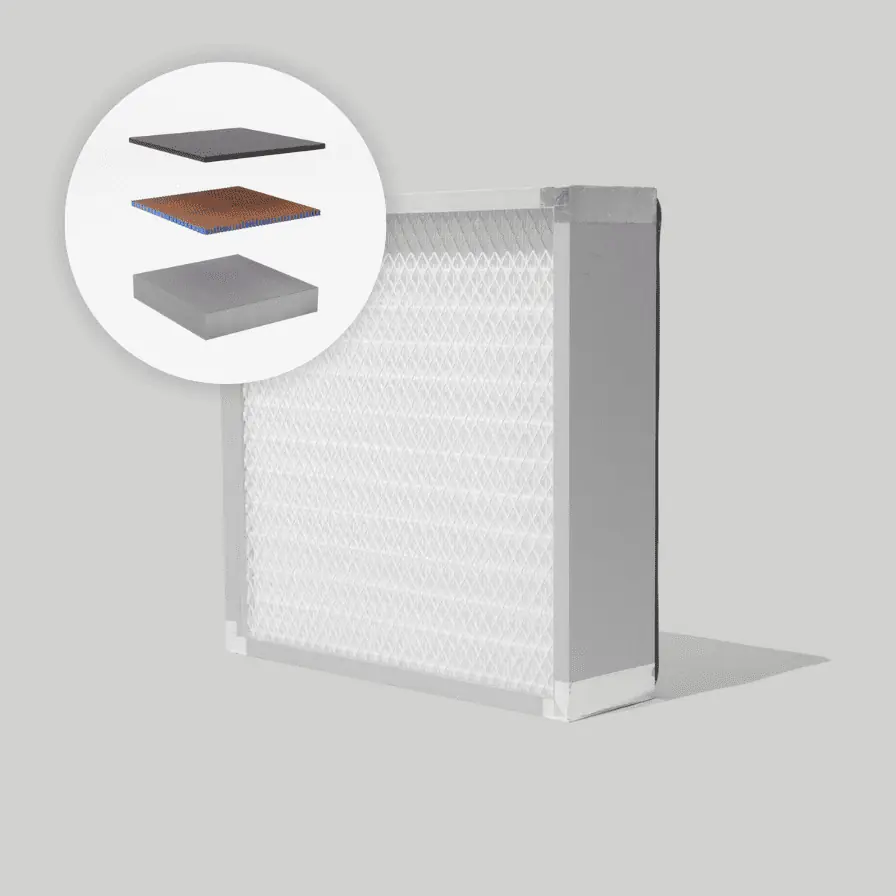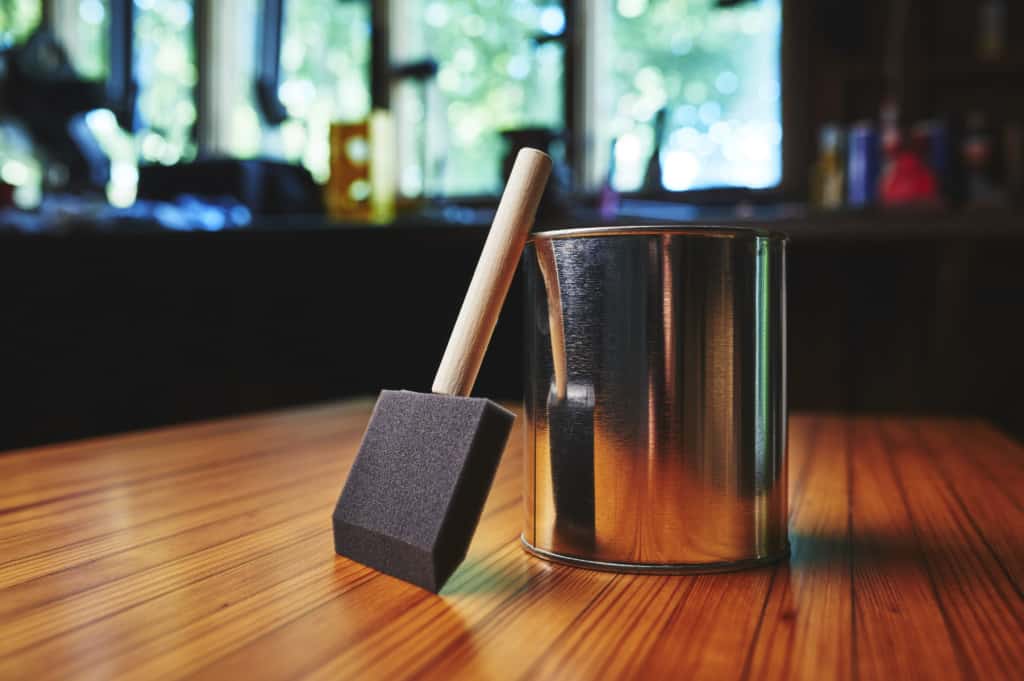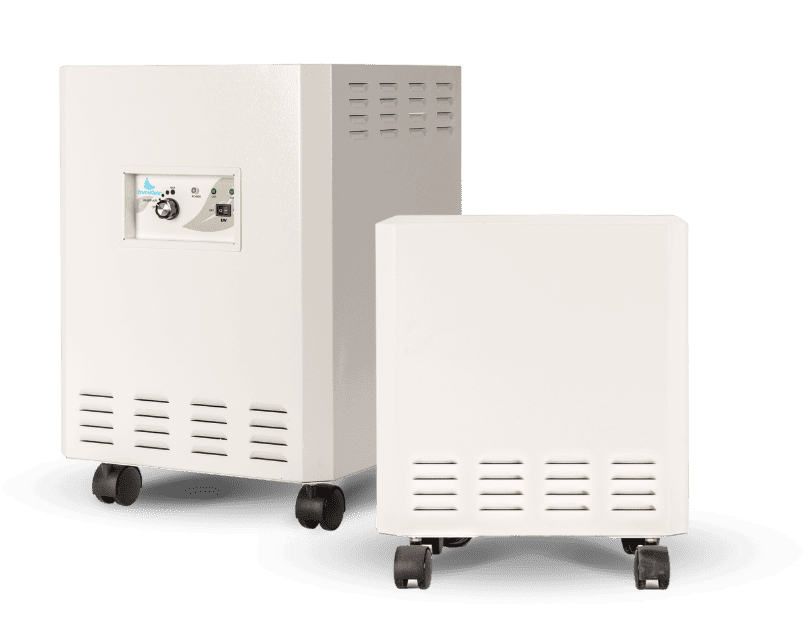The installation of your new wood floors is in progress, and you could not be more excited. Finally, you are changing out your worn floors for beautiful wood floors with a natural look that makes your home feel warm and inviting, just as you had wanted it to look for so long. However, as the installation continues and progresses the smells swirling inside of your home are intensifying and resulting in a painstaking smell that has left you with the worst feeling – a headache, coughing, and even shortness of breath. Why is this odor being produced in your home and what is the deal with these symptoms you are currently experiencing?
New wood floors contain a mix of ingredients and components that are used on the material to give it a vibrant look, help maintain its quality, and even material that helps lay the flooring during the installation process. These ingredients are chemicals that can become released into the indoor environment where the flooring has been placed and create a potentially toxic environment to indoor air quality and even the health of the occupants of the home. Among the different chemicals that are commonly used in new wood flooring, polyurethane is one that is both used regularly and can produce an amalgam of toxic compounds into the air that can be extremely toxic when released in fumes into the indoor air.
In this article, we are going to discuss the dangers of polyurethane fumes when installing new wood floors in a home and the different methods to use in a home to remove these harmful chemical fumes from the indoor air.
What is Polyurethane
Wood products found in a home like wood cabinets, wood tables, wood chairs, and even wood floors all need some kind of finish to act as protection to the material from the different elements that can taint the material over time. Additionally, coating these wood materials provides a clear finish that makes the wood look rich and vibrant – protecting it from knocks, scrapes, and weathering. The coating that these pieces of furniture and wood items get applied to the surface of the wood is a varnish such as polyurethane that is formulated so that its microscopic chains of resin molecules bond tightly with one another as it dries.
Polyurethane is a super-tough varnish that is applied as a finish to wood floors and other wood materials, this finish is more resistant to water, solvents, abrasions, and impacts than traditional varnishes. This chemical finish is made up of urethane polymers, chemical solvents, and curing agents that are used and produced as fumes into the indoor environment after installation – we will take more about polyurethane fumes harmful effects.
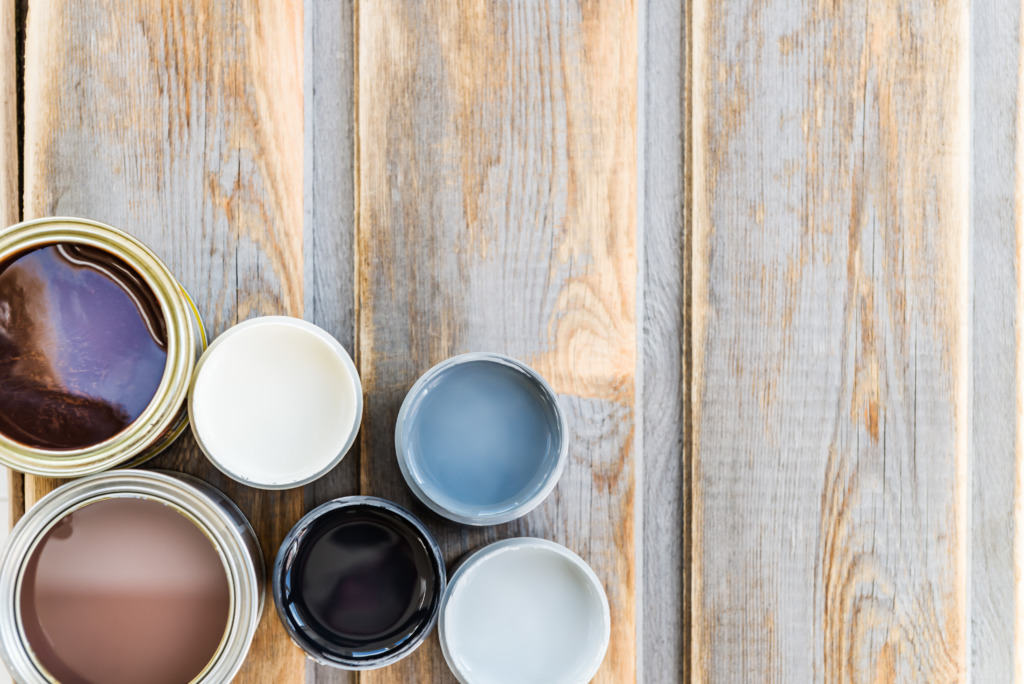
Types of Polyurethane
The polyurethane finishes that are used on new wood flooring come in a variety of types and sheens that can be selected from when installing the new flooring in a home. The different types of polyurethane that can be used on different wood materials found in a home can create certain conditions in the home that can be toxic to those exposed to this chemical polyurethane. The two types of polyurethane include water-based and oil-based or solvent-based.
- Water-Based Polyurethane: Water-based polyurethane is less durable than oil-based polyurethane but is usually preferred because it is odorless. When applying this type of polyurethane in a home it will not require a significant amount of ventilation, as it dries quickly and cleans up with water, and remains colorless. Compared to oil-based polyurethane, water-based is more expensive.
- Oil-Based or Solvent-Based Polyurethane: Oil-based polyurethane contains chemicals in its composition that will require a well-ventilated area when they are applied. A popular oil-based polyurethane finish is polyurethane varnish that is more durable and protective because it is more resistant to moisture, heat, or solvents than other varnishes. This type of finish goes on clear but over time it can turn into amber or yellow color on the surface.
Polyurethane Finish Types
When it comes to the different types of polyurethane finish sheens, they all will work and look differently on wood flooring. The three sheens include high gloss, semi-gloss, and fast-drying sheen.
High gloss polyurethane is an exterior/interior sheen that is a tough, flexible sheen. This high-performance, the heavy-duty sheen is a two-component finish that will dry to be a very shiny surface. High-gloss polyurethane is typically used in industrial environments and is recommended for covering prepared metal like iron and steel.
Semi-gloss polyurethane dries to a sheen that is a cross between gloss and flat. This is typically found on woodwork, furniture, doors, floors, and cabinets and is applied using either a bristle or foam brush.
Fast-drying types are quick-drying polyurethane that dries within 24 hours after application. This type of polyurethane sheen gives the wood a more subtle gloss while offering shine and a little additional color.
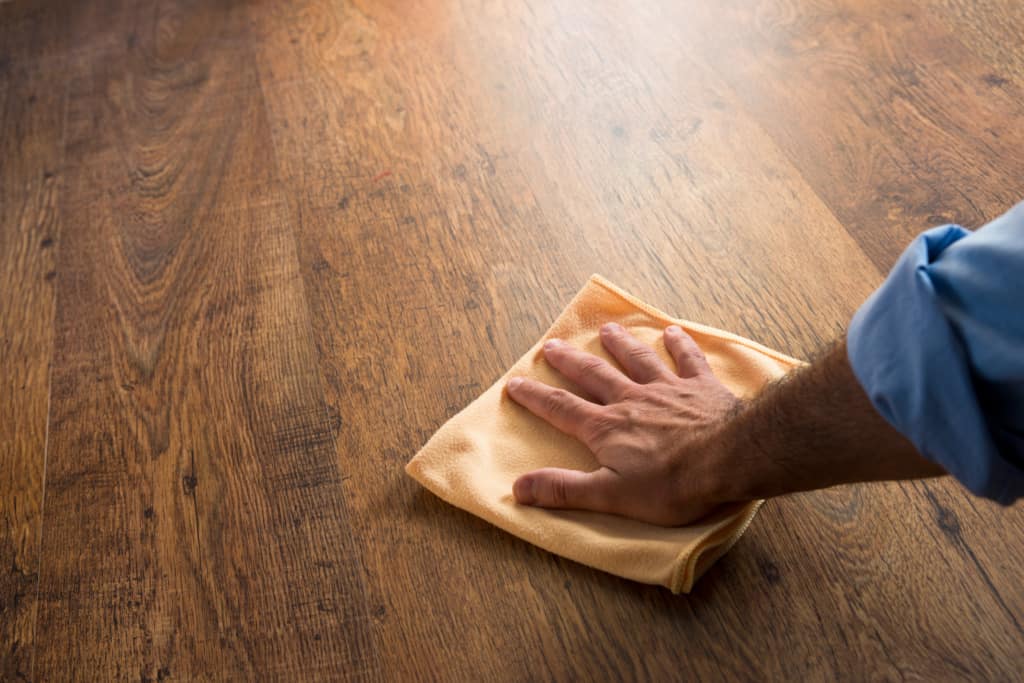
Is Polyurethane Safe
Polyurethane is available in many different forms, giving this varnish versatility allowing it to be used for a plethora of applications on materials. This varnish lasts for a long time and is one of the most common materials used for insulation and wood coatings including on wood floors. Polyurethane contains isocyanates, a compound that can potentially harm your lungs upon exposure through inhalation or ingestion. Isocyanates are the raw materials that make up all polyurethane products, however, this chemical is a classified carcinogen that will cause irritation of skin and mucus membranes, chest tightness, and difficulty breathing.
Along with isocyanates, other harmful toxins such as VOCs reside within the polyurethane used on wood flooring that will become airborne into the environment and trigger health issues in this area. VOCs (Volatile Organic Compounds) evaporate into the air when the finishing product is wet and as it cures inside of the indoor space – these VOCs can include xylene, ethylbenzene, and acetates. As these VOCs become airborne the process of off gassing begins in the environment for an undetermined amount of time, which will impact air quality and the health of those exposed to these off gassed VOCs.
How Long Does Polyurethane Off Gas
As we discussed earlier, there are different types of polyurethane varnishes that can be used on hardwood flooring in a home – some of which will contain a strong odor and others that will be seemingly odorless. The type of polyurethane that is used can play a major role in the length and severity of off-gassing that occurs from new wood floors that are installed in a home. The VOC off-gassing will begin immediately upon installation of the flooring and will steadily be emitted into the air as the flooring dries.
How to speed up off-gassing? The length of time that the polyurethane will off gas in a home can vary depending on the amount of flooring laid, the conditions present in the home (ventilation, airflow, temperature, humidity, etc.), and the amount of polyurethane applied to the flooring prior to installation. According to the U.S. Green Building Council, they found that oil-based finishes can off gas for months or even years after installation or application, whereas lower VOC water-based products will likely finish off-gassing within a few days of installation/application.
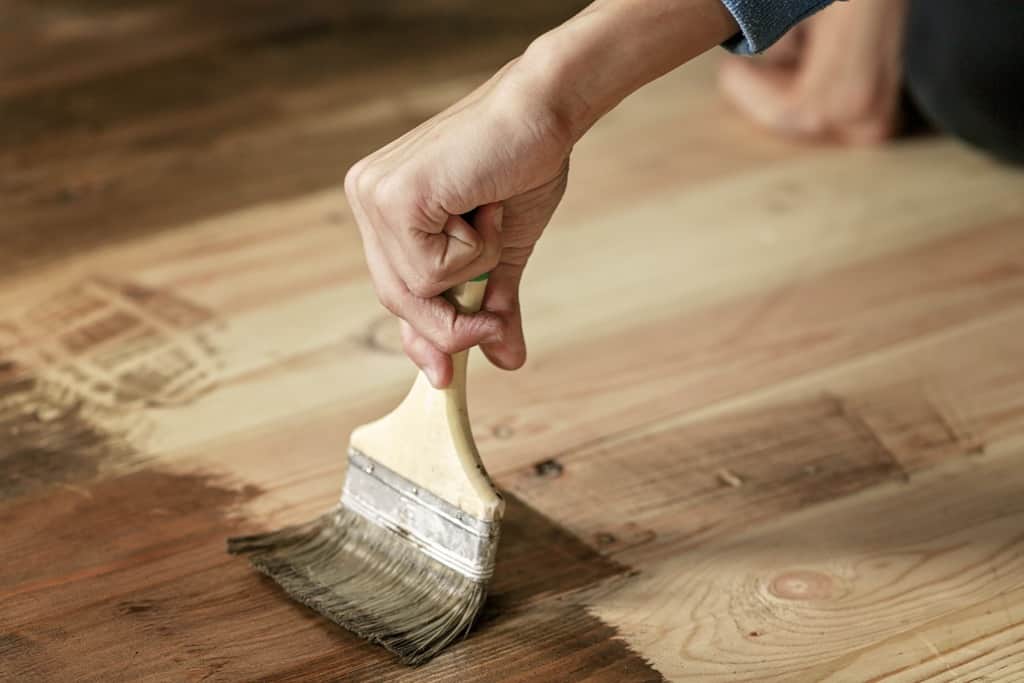
Allergy to Polyurethane
When harsh chemicals are applied to or make contact with the skin, there is a potential for an allergic reaction to strive that will result in allergic-type symptoms throughout the body including a rash, hives, itchy skin, and even abrasions on the skin. It is not surprising to learn that nearly every day we are exposed to chemicals in a variety of methods such as through clothing that has laundry detergent chemicals on the material, inhaling paint fumes from a newly painted wall, or even walking barefoot on new wood flooring that contains polyurethane or other chemicals can introduce the human body to an array of health effects that will start from this chemical exposure.
There have been known cases of contact dermatitis, most notably in children that have come into contact with polyurethane, specifically a case where a child was present to polyurethane on an iPad cover. The number of reported cases of contact dermatitis from polyurethane has been increasing because of increased exposure from a multitude of items that utilize this chemical.
Polyurethane Allergy Symptoms
An allergic reaction to polyurethane will ignite a bout of health symptoms in those who are exposed to this chemical agent in wood flooring, especially if the new wood floors are off gassing polyurethane into the air. Polyurethane products provide a list of potential health effects that will elicit symptoms in the human body.
The symptoms from a polyurethane allergy can include the following:
- Irritation to the eyes, nose and throat
- Skin irritation
- Itchy skin
- Difficulty breathing
- Rash or hives
How to Remove Polyurethane from Wood
What can you do after a new wood floor has been placed in your home that is emitting a strong-chemical odor of polyurethane into your home’s air? When polyurethane fumes are emitted from wood inside of the house it can lead to health issues and air quality issues within this indoor environment – and to rectify this substantial problem will be difficult once new flooring has been laid that is the culprit in the area. Cleaning the surfaces that have been contaminated by polyurethane is a challenging thing to accomplish, especially removing the chemicals from the flooring completely.
There are products out there today that will aid in the removal of chemicals from surfaces including polyurethane. The EnviroKlenz Everyday Odor Eliminator is specifically formulated to provide maximum neutralization and odor extractions by capturing, destroying, and eliminating offending odor sources safely and effectively. This product can be easily applied to wood flooring diluted using a sponge or a mop.
How to Get Rid of Polyurethane Smell in Home
If the fumes produced from polyurethane have steadily increased inside of a home, producing that distinct polyurethane smell in the air, it will be necessary to take action to completely remove these odors from the environment. First, after wood floors have been installed inside an indoor environment, it will be helpful to open windows to increase airflow and allow stale, contaminated air to exit the home into the outside air. The outdoor air will help to speed up the dissipation of the polyurethane that is being released into the air of the home.
Additionally, the use of an air purifier will significantly help to speed up the off gassing and remove the smell of the polyurethane being released from the new wood floors. The EnviroKlenz Air Purifier is your solution to removing a broad array of airborne pollutants from the air through the use of proprietary earth mineral technology. The EnviroKlenz technology destroys many chemicals by a combination of both physical and chemisorption mechanism. This proprietary earth mineral technology is used within the EnviroKlenz Air Cartridge that acts as the first stage filtration in the air purifier, to remove a broad array of chemicals and noxious odors from the air. The second stage filtration is a hospital-grade HEPA filter that is capable of removing particulate matter at a 99.99 percent efficiency.
As the EnviroKlenz Air Purifier is placed inside of an indoor environment where moderate to high levels of polyurethane is present, the air purifier will collect the indoor air and pass it through the two-stage filtration to aid in the neutralization and breaking down of the odorous chemical compounds in the air.
EnviroKlenz® Medical Disclaimer:
“Any information that is provided on this website is not for the use by any commercial or personal entity without expressed written consent of the blog author. The material and statements illustrated within this blog are not intended to diagnose, treat, cure, or prevent any diseases or medical conditions. Nor does the author in any way guarantee or validate the validity, totality, or efficacy of any claims and will therefore not be held responsible for the content of any claims. Always consult your medical physician for any specific medical advice or recommendations.”

